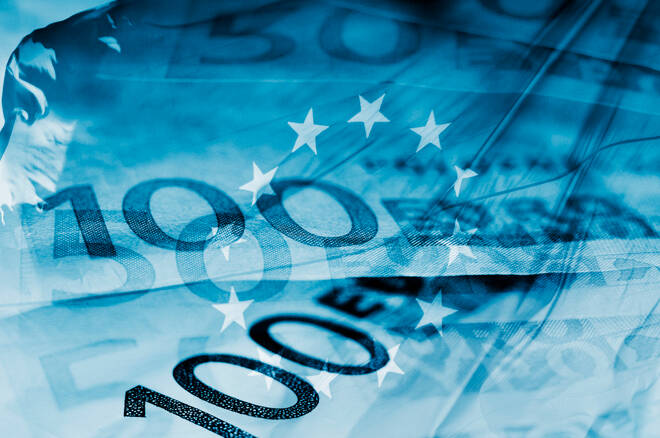Advertisement
Advertisement
An Anticipated Fall in Eurozone Industrial Production Weighs on the EUR
By:
Industrial production figures from the Eurozone lead to a pullback but not enough to give up early gains. Next up, ECB President Lagarde...
It was a busier start to the day on the Eurozone economic calendar today.
February industrial production figures for the Eurozone and finalized inflation figures from Spain were in focus.
Industrial Production
In February, industrial production across the Eurozone fell by 1.0%, reversing a 0.8% increase from January. Economists had forecast a 1.1% fall.
According to Eurostat,
- Production of capital goods fell by 1.9%, energy by 1.2%, durable consumer goods by 1.1%, and intermediate goods by 0.7%.
- Non-durable consumer goods production fell by a more modest 0.1% in the month.
- By member state, France (-4.8%), Malta (-3.8%), and Greece (-2.5%) registered the largest monthly declines.
- Ireland recorded the largest increase, rising by 4.2% in February.
Compared with February 2020, industrial production was down by 1.6%. In January, production had been up by 0.1% year-on-year.
- The production of non-durable consumer goods slid by 4.3% when compared with February 2020.
- Capital goods production (-2.2%) and energy production (-1.5%) were also a drag on the headline number, year-on-year.
- While the production of intermediate goods slipped by 0.1%, the production of durable consumer goods rose by 0.7%.
- Malta (-10.9%), Estonia (-8.9%), and France (-6.4%) registered the largest decreases when compared with February 2020.
- By contrast, Ireland (+41.4%) and Lithuania (+9.7%) registered the largest increases year-on-year.
Inflation
On the inflation front, Spain’s annual rate of inflation accelerated to 1.3% in March, which was in line with prelim figures. In February, inflation had stalled.
The Harmonized Index for Consumer Prices increased by 1.2% in March, which was also in line with prelim figures. In February, the Index had fallen by 0.1%.
Market Impact
Ahead of industrial production figures, the EUR had fallen to a pre-stat low and current day low$1.1947 before finding support. Through the morning, the EUR bounced back to strike a pre-release high and current day high $1.19741.
In response to the industrial production figures, the EUR rose to a post-stat high $1.19697 before falling to a post-stat low $1.19631.
At the time of writing, the EUR was up by 0.13% to $1.19642.
Up Next
ECB President Lagarde, with FED Chair Powell scheduled to speak late in the session.
About the Author
Bob Masonauthor
With over 28 years of experience in the financial industry, Bob has worked with various global rating agencies and multinational banks. Currently he is covering currencies, commodities, alternative asset classes and global equities, focusing mostly on European and Asian markets.
Advertisement
